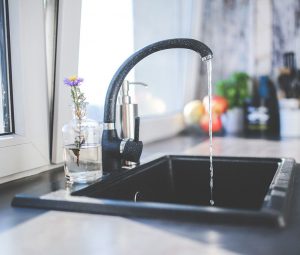Just as you regularly check your bank balance, your vehicle odometer, or even your weight, you should periodically check your water meter. By checking your water meter, you can detect hidden water leaks that may be costing you money and wasting water. It’s easy! Here’s how:
Turn off the water
Turn off all faucets and water-using appliances such as the refrigerator ice-maker, dishwasher, or clothes washer, hose bibs, and irrigation. Make sure no one uses any water until you are finished.

Locate the meter
- Most water meters are located in an in-ground box in the front yard near the street or sidewalk.
- Use a screwdriver to open the lid. Be sure to wear gloves and move the screwdriver around in the box to scare off any creepy crawlies that might be living there.
- Your meter may have a lid or cap over the dial. If so, use the screwdriver to remove it, or lift it off with your hands.
Reading the Meter
Your meter may look different than the one pictured, but they all work basically the same.

- The red triangle indicates water flow. On some meters the indicator may be located on the center of the red needle, it may be a different shape, or even a different color.
If all of the water is turned off and the red triangle is moving, there is a water leak somewhere. A leaky toilet will run water intermittently, so observe the dial for at least five 3. minutes to make sure there are no leaks.
2. Each increment on the dial represents one gallon of water. You can also detect leaks this way by noting the needle position and checking it again in 3-4 hours.
3. This is the meter’s odometer. The numbers represent the total gallons of water transferred through the meter since it was installed. In this example, 538,810 gallons of water have moved through the meter.
Detecting Leaks
If your meter indicates a leak, your next task is to locate the leak. Check your faucets, toilets, irrigation system, and hose bibs. If you do not
 find any leaks there, you may need to walk through your yard and check for unusually wet areas, which could indicate a leaky pipe. Link to How to check for leaks
find any leaks there, you may need to walk through your yard and check for unusually wet areas, which could indicate a leaky pipe. Link to How to check for leaks
Future Leaks
Continue to check your water meter periodically to identify leaks. You will save money on your water bill, and you will join others in your community who are doing their part to conserve water.
Resources
H2ouse: http://h2ouse.org/resources/meter/index.cfm
Florida Water StarSM: http://floridawaterstar.com/
UF Water Institute: http://waterinstitute.ufl.edu/
 0
0
